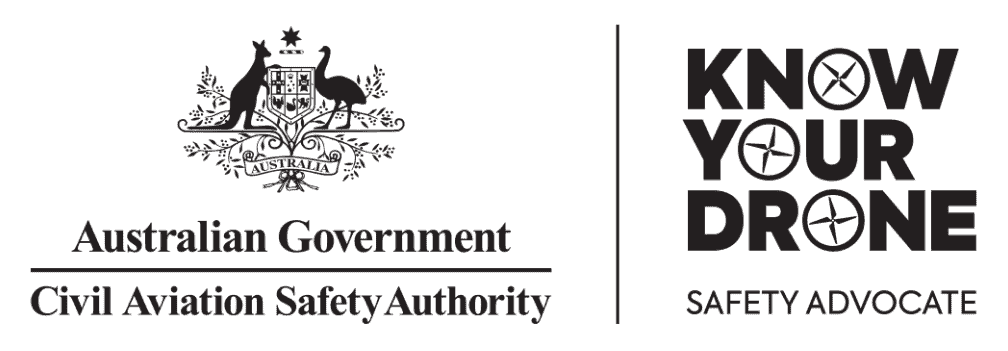Biodiversity & Agriculture - Drones in Wildlife
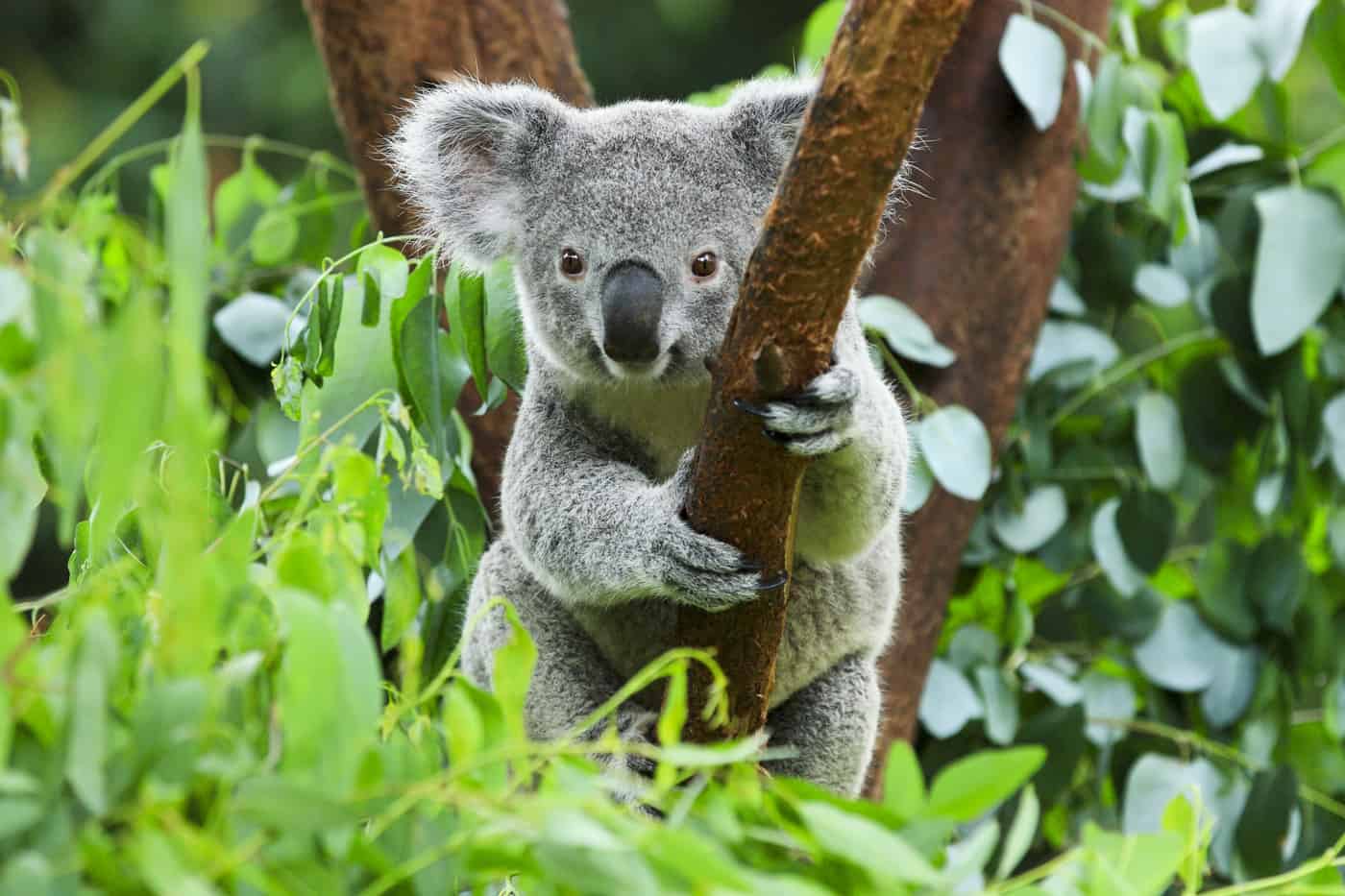
Tailored drone solutions and advanced data analytics for biodiversity and agricultural projects
At Ripper Corp, we specialise in providing customised drone solutions that are tailored to meet the specific needs of each conservation and agricultural project.
Our expertise in drone technology allows us to adapt and design systems that optimise operations, whether it’s for tracking wildlife movements, monitoring habitat changes, or improving agricultural productivity. We work closely with our clients to understand their unique challenges and objectives, ensuring our drone solutions deliver the most effective results.
In addition to our tailored drone services, Ripper Corp harnesses the power of advanced data analytics and artificial intelligence to deepen our understanding of wildlife patterns and environmental changes.
Our systems process the vast amounts of data collected by our drones, transforming them into actionable insights. This enables more informed decision-making and strategic planning in conservation efforts and agricultural wildlife management, enhancing efficiency and effectiveness in field operations.
Drone technology has transformed a number of sectors in Australia and across the globe. Wildlife management and agriculture is no exception, and drones are enabling great outcomes in this space.
Drones are not only being used to improve our understanding of biodiversity, but changing the way we approach conservation and agricultural practices.
TRUSTED BY LEADING COMPANIES, INSTITUTIONS AND GOVERNMENT AGENCIES
















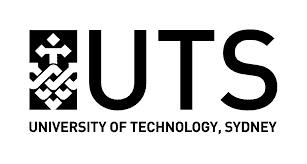






Drones as a modern tool for biodiversity and agriculture
Drone technology is becoming invaluable in the study and management of wildlife.
The versatility of drone technology and their overhead access capabilities allows for a wide range of applications in conservation, agriculture and wildlife management and study, from habitat mapping to monitoring climate change impacts.
In agriculture, drones are instrumental in precision farming, helping farmers to efficiently manage their crops and reduce environmental impact.
While so much of today’s technology has a negative impact on the environment, wildlife and conservation, drone technology has opened many doors to greater environmental responsibility, better agricultural practices, and biodiversity.


Ripper Corp is leading the way forward with drones for wildlife surveys, tracking and conservation efforts
For wildlife survey and research teams, the integration of drone technology represents a significant leap forward in data collection and analysis. Drones not only offer a more efficient, less invasive, and safer means of studying wildlife but also open new possibilities for conservation efforts.
As this technology continues to evolve and its role in wildlife research is set to become even more pivotal, Ripper Corp is committed to remaining at the forefront of developments and play a crucial role in the future of Australia’s biodiversity and habitat conservation.
The benefits of drones for wildlife tracking and monitoring vs traditional methods
Thermal imaging and night surveys
Since they can be equipped with thermal imaging cameras, drones are capable of conducting detailed surveys at night. This technology unveils the nocturnal activities of wildlife, providing insights that are vital for comprehensive ecological studies and enhancing our understanding of animal behaviours in their natural habitat.
GPS and advanced sensors
Drones equipped with GPS and advanced sensors excel in tracking and monitoring wildlife. They collect data on animal movement patterns and health from a safe distance, enabling researchers to study migratory and endangered species with direct interference, reducing stress on wild animal populations.
Efficiency and reach
One of the most significant advantages of using drones in wildlife research is their efficiency.
Drones can cover large areas in a fraction of the time it would take using ground-based methods. This not only saves time but also reduces the costs associated with extensive field surveys.
Minimising disturbance
Traditional wildlife research methods often require close proximity to animals, which can cause stress and behavioural changes in wildlife.
Drones wildlife can't detect easily, on the other hand, allow for data collection from a safe distance, minimising disturbance to animals and their habitats.
Enhanced data quality
Drones provide high-quality, and even real-time data that is often more accurate and detailed than what can be gathered through traditional methods.
This can include 3D mapping, thermal imaging, and high-resolution photography and videography.
Accessibility and safety
Drones can access remote, rugged, or otherwise inaccessible areas with ease, allowing researchers to study wildlife in previously unreachable habitats. Additionally, drones enhance safety by reducing the need for researchers to enter potentially hazardous environments.
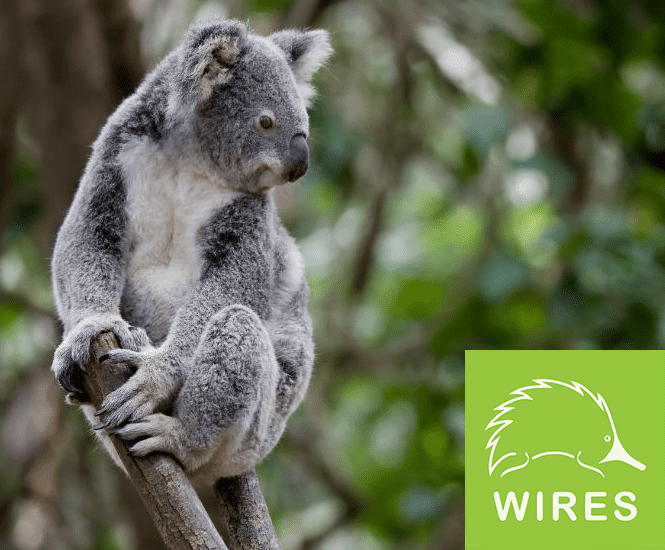
Drones for wildlife: how drones help with wildlife conservation and study
There are many ways that wildlife drones can help with monitoring wildlife, conducting wildlife surveys, tracking wildlife and other conservation activities.
At Ripper Corp, we are particularly proud of the work we do in this space, and have joined in conversation efforts with organisations such as WIRES, Australia’s largest Wildlife Rescue initiative. We’d love to discuss how we can help with your project.
Drones for wildlife surveys
In Australia, drones are increasingly being used for wildlife surveys, offering a less intrusive and more comprehensive method of data collection compared to traditional ground-based surveys.
Wildlife drones equipped with high-resolution cameras and other sensory equipment can cover vast areas quickly, providing detailed images and data that help in monitoring large terrains, and local animal populations and their habitats.
By using drones equipped with GPS and other tracking technologies, researchers can gather real-time data on the movement and health of animals, mapping the wildlife and their movements.
Drones have revolutionised the way wildlife surveys are conducted, by providing researchers with high-resolution imagery and video data, and the ability to get the bigger picture, quickly.
Drones and wildlife mapping
The use of drones for tracking wildlife has opened new possibilities in the study of animal behaviour and migration patterns.
In wildlife mapping, drones offer a bird’s-eye view, allowing for the creation of detailed habitat maps. These maps are crucial for understanding spatial distribution, habitat usage, and environmental factors affecting wildlife.
Drones generate high-resolution maps and this data is vital for identifying critical habitats, migration corridors, and potential threats to wildlife.
Using drones for mapping wildlife is particularly useful in studying species that are elusive or endangered, as it minimises human interference while providing accurate and timely information on the populations and locations of wildlife.
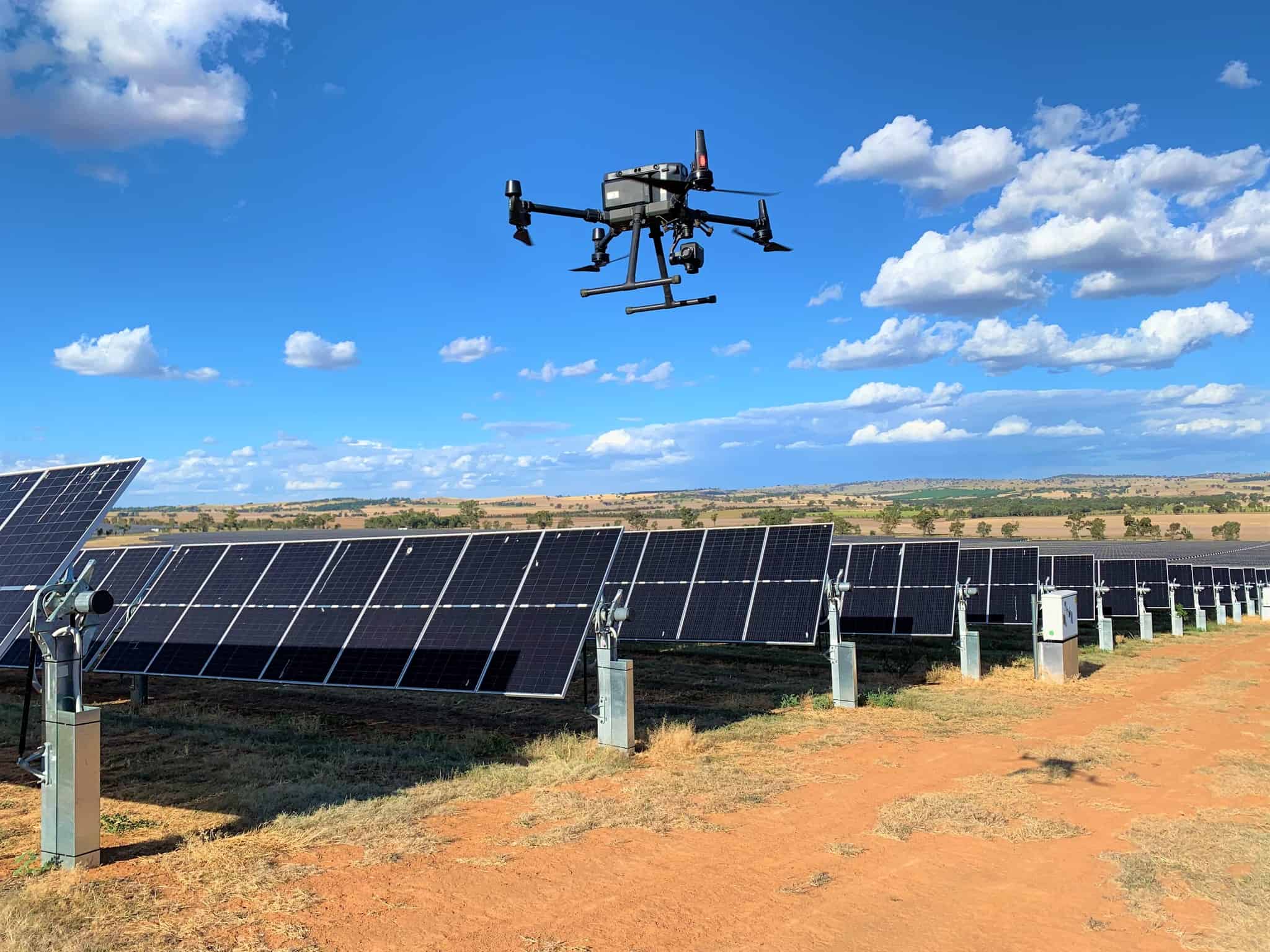
Drones for agriculture: how drones help agricultural outcomes
Drone use in agriculture unlocks innovative solutions to age-old agricultural challenges, making farming more efficient, sustainable, and productive.
From checking your solar panels, through to monitoring stock, if you would like to discuss how drones can help you unlock solutions for your agricultural business, don’t hesitate to contact our expert team.
Precision agriculture with drone technology
One of the key advantages of drone use in agriculture is precision farming. Drones equipped with advanced sensors and imaging capabilities can provide detailed insights into crop health, soil conditions, and moisture levels.
This data enables farmers and agricultural project managers to make informed decisions about irrigation, fertilisation, and pest control, leading to more efficient use of resources and reduced environmental impact.
Monitoring and crop health assessment
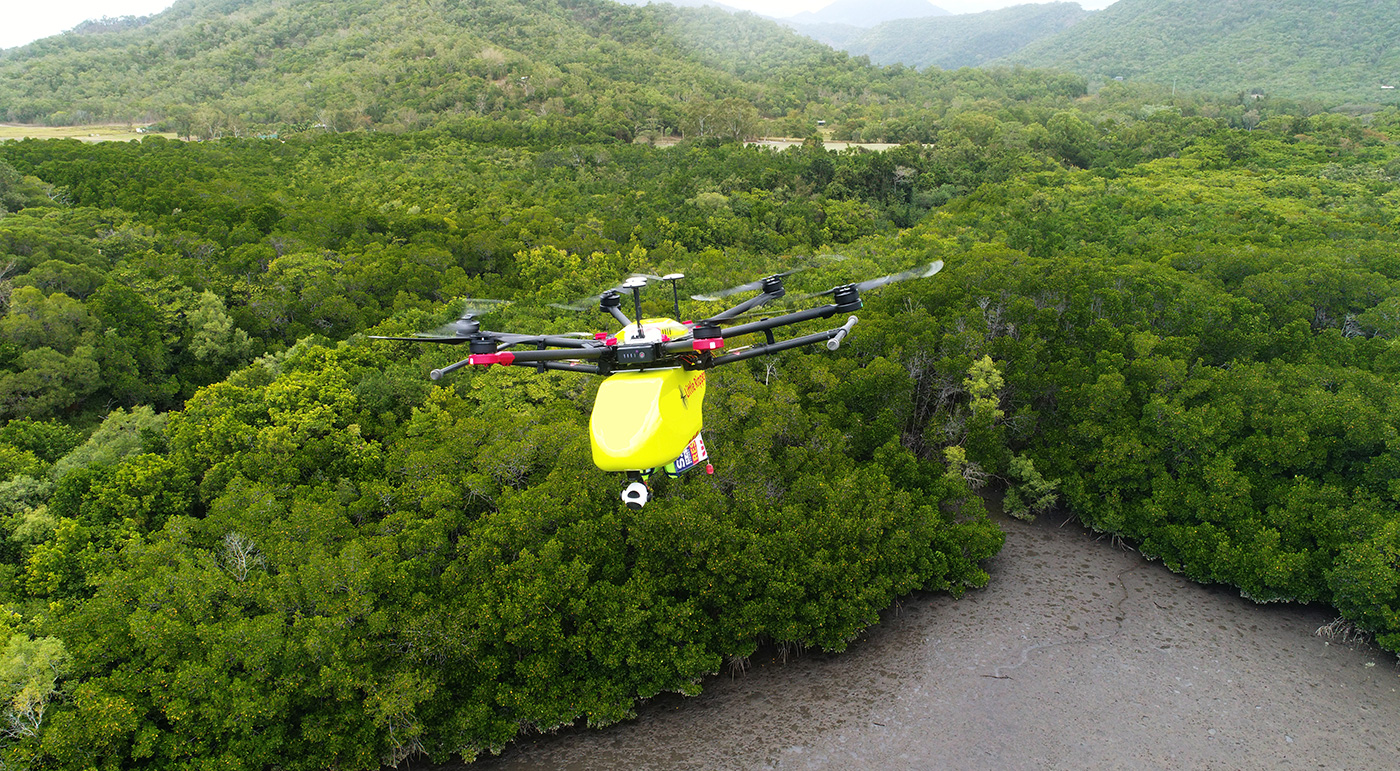
Drones for conservation
Drones are playing a pivotal role in wildlife conservation efforts worldwide, including in Australia’s diverse ecosystems. Wildlife conservation drones allow conservation efforts to operate more efficiently, and without disturbing the wild animals and habitats they are trying to help protect.
Drones for conservation are often used for wildlife conservation tasks such as anti-poaching operations, habitat restoration, and monitoring the health of ecosystems.
Drones for conservation: locating illegal anti-conservation activities
Drones can quickly survey large areas, making them effective in detecting illegal activities like poaching or logging.
The capability of drone technologies now also allows for high-resolution images and video footage to be taken, so any illegal poaching, logging, trespassing into restricted conservation areas, or anything else that puts conservation efforts at risk, can be captured and used as evidence to find and penalise offenders.
Drones for wildlife reforestation projects
Choose Ripper Corp for advanced drone applications and solutions for wildlife, biodiversity and agriculture
Ripper Corp is a leading drone and technology company that specialises in advanced flight operations, top-quality training, and innovative technology.
Ripper Corp’s fleet of drones is equipped with all of the technical elements that you need for your wildlife and agricultural efforts.
Our drones feature state-of-the-art technology, including high-resolution cameras, thermal imaging, and GPS tracking systems of the highest quality.
Specialised, fit for purpose, fleet of drones
Ripper Corp is paving the way in the Australian drone technology industry, particularly in the fields of biodiversity preservation and agricultural enhancement. We operate a specialised fleet of drones that are tailor made for environmental monitoring and agricultural efficiency.
DJI certified training partner
DJI is a leading name in the drone technology industry that constantly pushes the boundaries of drone innovation. As Australia's only authorised DJI Training Partner, Ripper Corp provides CASA- certified drone pilot training programs.
Collaborative approach
Ripper Corp has forged robust and positive collaborations with a variety of organisations across Australia. We understand that unique challenges will be faced in every conservation project. Our strong emphasis on collaborative solutions enable us to offer a tailored, flexible approach to meet your specific project objectives.
Questions we are frequently asked about drone applications in wildlife conservation efforts
How do drones improve the accuracy of wildlife population estimates?
Conservation drones that monitor wildlife significantly enhance the accuracy of population estimates by providing high-resolution imagery that covers vast areas without disturbing the animals. This allows for more precise counting and monitoring, especially in dense or inaccessible regions where traditional methods may fall short. By utilising advanced sensors and aerial perspectives, drones can identify and track animals individually, as well as track overall population changes over time. This provides critical data for conservationists.
What specific features do drones have for nighttime wildlife monitoring?
Our drones are equipped with thermal imaging cameras that play a crucial role in nighttime wildlife monitoring. These cameras detect heat signatures from animals, making it possible to observe and study nocturnal wildlife activities without artificial lighting, which can disrupt natural behaviours. This technology not only helps in understanding species that are active at night, but also aids in monitoring species in dense foliage or obscured environments.
Can drones be used to deliver medications or vaccinations to wildlife?
Yes, drones have been adapted to deliver medications and vaccinations to wildlife — especially in hard-to-reach areas. This method is particularly useful for managing health issues within wild populations, such as vaccinating against diseases or treating injured animals with minimal human interaction. It ensures that the necessary treatments are delivered efficiently and with reduced stress to the animals.
What role do drones play in emergency wildlife rescue operations?
Drones are invaluable tools in emergency wildlife rescue operations. They provide rapid assessment of disaster-impacted areas, identifying stranded or injured animals from above. This quick reconnaissance helps rescue teams prioritise their efforts and facilitates faster response times. Drones can also carry small rescue equipment to isolated locations, providing immediate assistance to affected wildlife.
How do drones contribute to combating illegal wildlife trafficking?
Drones contribute significantly to combating illegal wildlife trafficking by conducting surveillance over large and often remote areas. Equipped with high-resolution cameras and other sensory equipment, drones can monitor known trafficking routes and detect suspicious activities. The data collected can then be used to alert law enforcement and aid in apprehending traffickers, thereby protecting endangered species from illegal trade.
In what ways are drones used for environmental impact assessments?
Drones are increasingly used for environmental impact assessments, as they can provide detailed observations of how new developments or changes in land use affect local wildlife and their habitats. By regularly capturing images and other environmental data, drones help assess the long-term impacts of human activities, ensuring that any potential harm to biodiversity is understood and mitigated.
How do drones assist in the management of invasive species?
Drones assist in the management of invasive species by mapping infestations and monitoring the effectiveness of eradication efforts. High-resolution aerial imagery allows conservationists to pinpoint where invasive species are thriving and assess the damage to native ecosystems. Drones can also be used to apply targeted herbicides or release biological control agents, reducing the spread of invasive species with precision and efficiency.
What training do operators receive to use drones in wildlife monitoring effectively?
Operators receive specialised training to use drones effectively in wildlife monitoring, which includes both technical skills for operating UAVs and ecological knowledge to understand animal behaviour and habitat requirements. Our CASA-certified drone pilot training programs focus on safe and ethical flying practices, data collection techniques, and the interpretation of the information gathered, ensuring that drone operations contribute positively to wildlife research and conservation initiatives.
Ready to join the future of drones?
Drones and drone technology are in an era of innovation. Ripper Corp is the team leading that innovation from the front. You can view our courses and their upcoming dates or request a callback to engage us for your drone operations.

